بيان المدير الإقليمي بشأن البعثة إلى سوريا

8 تشرين الثاني/ نوفمبر 2020 لقد عدتُ مؤخراً من بعثة إلى سوريا استغرقت أربعة أيام، حيث التقيتُ بمسؤولين على جميع المستويات، وعاملين صحيين، وشركاء، ودوائر أكاديمية، وغيرهم، لمعرفة المزيد عن الوضع الصحي بوجه عام، وللتوصُّل إلى سُبُل جديدة للعمل معاً من أجل تعزيز تقديم الخدمات، ولحماية السوريين من التهديدات الحالية، وللمساعدة في تقوية النظام الصحي الذي دمّرته الأزمة.
وقد التقيتُ بالعاملين الصحيين في الخطوط الأمامية والمرضى في دمشق وحمص وحماة، ومن بينهم الطفل جعفر البالغ من العمر 6 سنوات الذي يتردد على أحد مراكز الرعاية الصحية في حمص التابع لإحدى المنظمات غير الحكومية والذي تدعمه منظمة الصحة العالمية للخضوع لجلسات الغسيل الكلوي ثلاث مرات في الأسبوع للمساعدة في بقائه على قيد الحياة ونموه. وأخبرني الأطباء في المركز نفسه عن أم لطفليْن أعميَيْن ظلّت منتظرة طوال سنتين لإجراء عملية رأب الأوعية الدموية في القلب، وتمكَّنت أخيراً من إجراء هذه العملية المنقذة للحياة الأسبوع الماضي فقط.
وفي مستشفى الأطفال في دمشق، زرتُ قسم الطوارئ الجديد الذي أعادت المنظمة تأهيله بدعم من اليابان، والذي يستقبل في المتوسط 300 طفل يومياً، حيث رأيتُ طاقماً متخصصاً يستقبل المرضى المحالين من جميع أنحاء البلاد المصابين بحروق وإصابات وحالات عدوى مهددة للحياة.
والتقيتُ طوال فترة وجودي في سوريا بالأطباء وطواقم التمريض وغيرهم من العاملين الصحيين الذين تحمّلوا سنوات من العمل بكل شجاعة تحت تهديد الهجمات خلال الحرب، وما زالوا صامدين حتى الآن من أجل إنقاذ الأرواح على الرغم من قلة الموارد. وقال لي أحد الأطباء: «كنا نخدم شعبنا في الظروف العادية؛ ونحن نخدمه في هذه الظروف الاستثنائية فلكَ أن تتخيل ما واجهناه وما نواجهه الآن».
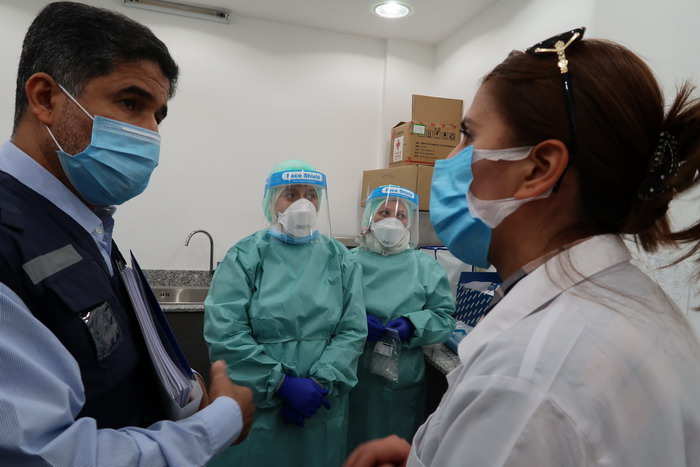
ونحن في منظمة الصحة العالمية نتحدث عن قدرة النُظم الصحية على الصمود، وأهميتها في ضمان صحة جميع الناس وعافيتهم، لا سيّما أثناء الأزمات. ولكن في سوريا، رأيتُ القدرة على الصمود والروح الإيجابية لهذا الشعب الذي لم يستسلم، ولا يزال عازماً على إعادة السلام والازدهار إلى بلده على الرغم من اليأس الذي واجهه على مدى قرابة عقد من الزمان.
لكن الدمار الناجم عن الحرب لا يزال جلياً في سوريا، كما أن التعقيدات المستجدة - مثل كوفيد-19 - فاقمت أعباء الناس الذين أنهكهم بالفعل الصراع المستمر وفاشيات الأمراض والكوارث الطبيعية، ومنها الحريق الهائل الأخير الذي دمّر سُبُل عيش الكثيرين.
ولا يزال نصف جميع المهنيين الصحيين خارج البلاد، ولا يعمل سوى 48% من المستشفيات العامة و48% من مراكز الرعاية الصحية الأولية بكامل طاقتها. ولا يزال هناك نقص في أعداد العاملين الصحيين واللوازم الطبية والمعدات والأدوية، حيث لا يتوفر ما يقرب من خُمس الأدوية المنتَجة محلياً بسبب الآثار السلبية للأزمة الاقتصادية على إنتاج المستحضرات الصيدلانية المحلية.
فالناس يعانون ويموتون بسبب نقص الأدوية اللازمة لحالات مثل ارتفاع ضغط الدم والسُكري والفشل الكلوي. وتتعرّض المعدات الرديئة النوعية التي تُستخدم على مدار نوبتيْن ليلاً ونهاراً للضغط الشديد بسبب ارتفاع الطلب عليها والقيود المفروضة على استيراد قطع الغيار؛ وقد أدّت العقوبات إلى تفاقم الوضع الذي كان متردياً أصلاً، الأمر الذي أثّر على جميع الناس وجميع القطاعات، ولا سيّما قطاع الصحة.
والأطباء المهرة بحاجة ماسّة إلى موارد تمكّنهم من إجراء العمليات الجراحية المنقذة للحياة وغيرها من الإجراءات الطبية اللازمة. وطلاب الطب مصممون على خدمة بلادهم ولكنهم يشعرون بالإحباط بسبب الثغرات العديدة التي سيواجهونها باعتبارهم مقدمي خدمات في الخطوط الأمامية.
ومع أن الشعب السوري يعيش حالة من الحرب والجوع والمرض، فقد أصبح يواجه الآن تهديداً آخر يلوح في الأفق: مثل العديد من البلدان في جميع أنحاء العالم، إذ نتوقع موجة أخرى من كوفيد-19 في سوريا.
وبينما نواصل تقديم الإمدادات وتوسيع نطاق القدرة على إجراء الاختبارات في جميع أنحاء البلاد من خلال اتباع نهج "جميع الأساليب"، رأيت التزاماً رفيع المستوى عبر جميع مستويات الشركاء وجميع القطاعات لمكافحة الجائحة بما يتماشى مع توصيات منظمة الصحة العالمية. ومع ذلك، لا تزال القدرة على إجراء الاختبارات محدودة، ويظل التزام عموم الناس باستخدام الكمامات والتباعد البدني منخفضاً، ولا يزال العاملون الصحيون معرّضين بشدة للخطر بسبب الافتقار إلى معدات الوقاية الشخصية.
إن الشعب السوري أمامه طريق طويل وشاق. ولكن على الرغم من الدمار والحرمان، فإن هناك قدرة هائلة على الصمود وأملاً مشجعاً؛ وسنواصل دعمنا لجميع السوريين في كل خطوة على الدرب، ولا سيّما الفئات الأكثر ضعفاً، مهما كانت الظروف التي يواجهونها. ورغم كل هذه التحديات، فقد تمكّن السوريون من الحفاظ على مستوى أساسي من الرعاية الصحية يمكننا البناء عليه بدعم من المجتمع الدولي وشركائنا الملتزمين داخل البلاد وخارجها.
RD reports

حافِظ على صحتك خلال شهر رمضان
- اتبع نظامًا غذائيًّا صحيًّا،واشرب كميات وفيرة من المياه.
- تجنَّب التدخين، والوجبات غير الصحية، والأطعمة الغنية بالسكر.
- اتبع تدابير سلامة الغذاء.
- حافِظ على نشاطك، واحصل على قسط كافٍ من النوم.
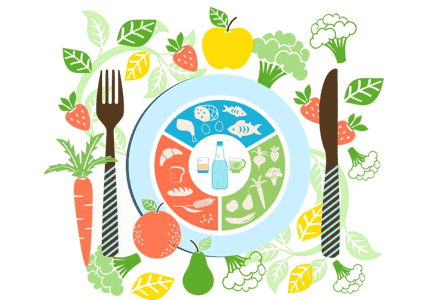
حافِظ على سلامتك خلال شهر رمضان
- اغسل يديك جيدًا مِرارًا وتَكرارًا.
- ارتدِ الكمامة.
- التزِم بالتباعد البدني.
- حافِظ على آداب العطس والسعال الصحيحة.
- تجنَّب التجمعات والفعاليات الكبيرة، خصوصاً إن كنتَ من الفئات التي يرتفع خطر إصابتها بكوفيد-19 أو تشعر بوعكة صحية.
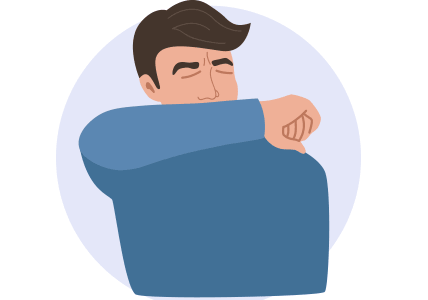
حافظ على روح رمضان من خلال
- التدبُّر والارتقاء والصلاة والمشاركة والرعاية - كل هذه الأمور من مسافة صحية.
- الدعاء للمرضى، وبث رسائل الأمل والمواساة.
- التفاعل مع العائلة والأصدقاء وكبار السن مع الحفاظ على التباعد البدني.
- تفقد أحبائك عن طريق الهاتف أو مكالمات الفيديو.
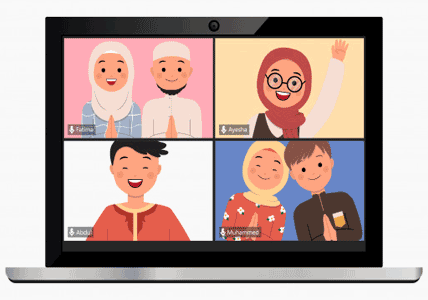
ابحث عن طرق جديدة لمساعدة الآخرين في رمضان
- تجنَّب التجمعات المزدحمة لمآدب الإفطار، وفكِّرْ في استخدام صناديق أو وجبات طعام فردية معبأة سابقًا.
- استخدِم التكنولوجيا الرقمية لتنظيم صرف الصدقات أو الزكاة.
- أكد مجمع الفقه الإسلامي الدولىي إمكانية استخدام أموال الزكاة لشراء ونشر لقاحات كوفيد-19
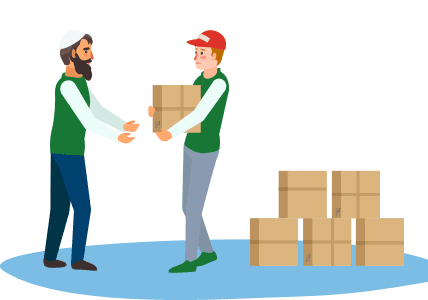
لا دليلَ على أن الصيام يزيد خطر العدوى بكوفيد-19
- الأشخاص الأصحاء بإمكانهم الصيام.
- يمكن لمن يعانون من استمرار أعراض كوفيد-19 بعد إصابتهم بالعدوى النظرُ في أن يأخذوا بالرخصة الدينية، وأن يُفطِروا بعد التشاور مع أطبائهم.
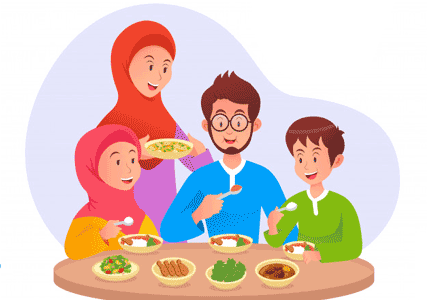
إذا كنت تستضيف السحور أو الإفطار أو غيرها من المناسبات الاجتماعية في رمضان
- فكِّر في اقامة تجمعات افتراضية وليقتصر الحضور الفعلي على الأشخاص الذين تعيش معهم .
- أقم مناسبات أصغر حجمًا مع عدد أقل من الحضور بدلاً من التجمعات الكبيرة.
- تأكَّدْ من وجود تهوية مناسبة في الأماكن المغلقة، أو استخدم الأماكن المفتوحة.
- فكِّر في اتخاذ تدابير لتيسير تتبُّع المخالطين عند اكتشاف مريض ممن حضروا الفعالية.
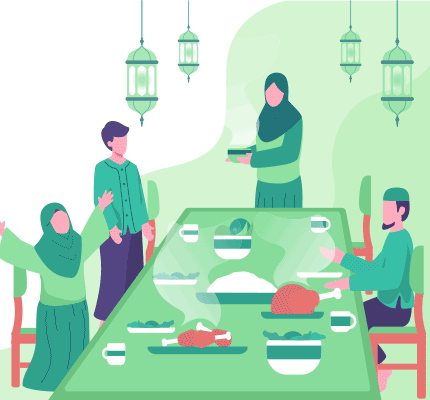
شجِّعْ على الممارسات الصحية في المساجد ودور العبادة
- شجِّعْ على الوضوء في المنزل، إن أمكن، و استخدم السُجادات الشخصية.
- تأكَّدْ من أن مرافق غسل اليدين مجهزة بالصابون والماء.
- تأكَّدْ من توفر منظف كحولي (يصل فيه تركيز الايثانول على الأقل إلى 80% أو 75% كحول ايزوبروبيل ) عند أبواب المساجد وداخلها
- نظِّم تدفق الوافدين والخارجين من المساجد ودور العبادة.
- تأكَّدْ من توافر مناديل وحيدة الاستعمال، وسلال مهملات بها بطانات يمكن التخلص منها .
- تأكَّدْ من تكرار تنظيف أماكن العبادة ومبانيها.
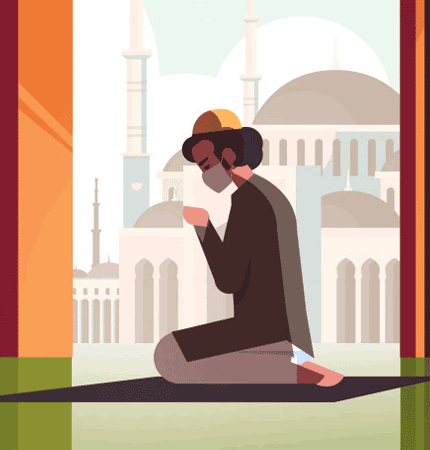
Iفي الأوضاع التي تُفرَض فيها قيود على التنقل، من المحتمل أن تزداد حوادث العنف المنزلي، ولا سيما مع النساء والأطفال والمهمشين
- يمكن لرجال الدين أن يلقوا خطبًا ومواعظ مؤثرة لرفض العنف، وأن يقدموا الدعم أو يشجعوا الضحايا على التماس المساعدة.

إذا كنت ستتلقى لقاح كوفيد-19 خلال شهر رمضان
- قضت هيئات فتوى بارزة ، مثل الأزهر الشريف، بأن أخذ لقاح كوفيد-19 لا يُفسد الصيام حيث تعطى اللقاحات عن طريق الحقن العضلي وليس عن طريق مدخل طبيعي كالفم أو الأنف.
- كما أعلنت هيئات فتوى بارزة ،مثل مجمع الفقه الإسلامي الدولي، أن لقاحات كوفيد-19 مسموح بها بموجب الشريعة الإسلامية .
- استمِر في الالتزام بالتدابير الصحية والاجتماعية العامة لحماية الأخرين من احتمالية انتقال العدوى حتى بعد حصولك على اللقاح.
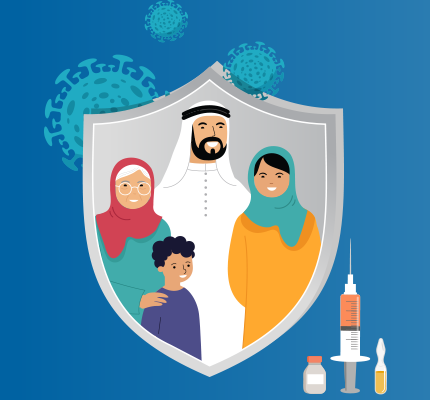
في حال قيام أي بلد بنشر لقاح كوفيد-19 بين أفراده خلال شهر رمضان، نحثه على
- العمل مع رجال الدين المحليين لتعزيز أخذ لقاح كوفيد-19 واستمرار حملات التطعيم دون انقطاع.
- إعلام عامة الشعب بأن هيئات فتوى بارزة ،مثل مجمع الفقه الإسلامي الدولي، قد أعلنت أن لقاحات كوفيد-19 مسموح بها بموجب الشريعة الإسلامية، كما قضت هيئات فتوى أخرى، مثل الأزهر الشريف، بأن أخذ لقاح كوفيد-19 لا يُبطل الصيام.
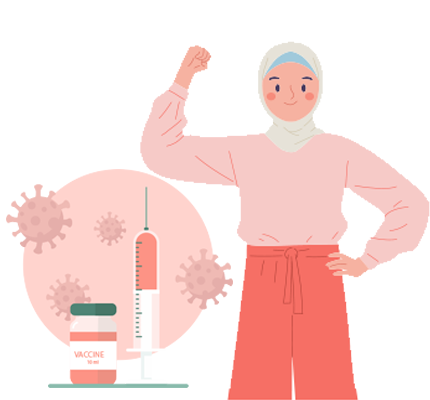
Ramadan messages from the Region
Related link
Eat healthy and be active in Ramadan
COVID-19 Response Guidelines
Several countries are requesting WHO for guidance on enforcing limitations on mass gatherings, closure of institutions and commercial outlets, and travel restrictions. While such measures may assist in the overall management of the response to COVID-19, these should not divert attention, energy, or resources from the proven public health measures.
The most effective measures in controlling disease transmission remain early detection, early isolation and case-management/treatment, contact tracing, and risk communications/community engagement.
These containment measures should continue to constitute the central pillar of the response. Other additional measures play a supportive role. Clear and transparent communications to the community around all measures is vital.
Consider the following:
- Priority measures to interrupt chains of transmission.
- Early detection, isolation and case-management/treatment. Experience from China has demonstrated that the essential public health measures of early detection, diagnosis, isolation and case-management/treatment for all of all people with COVID-19 - including people with mild symptoms - can change the course of the outbreak. Therefore, rapid scaling up of capacities for disease surveillance, laboratory testing, isolation of all people who have COVID-19 and early case-management/treatment are vital. Clear and regular communications to instruct the public on how to recognize symptoms of the disease and to seek care as soon as these are identified is core to the success of these measures. Wherever possible, people with mild symptoms of COVID-19 should be isolated in a medical facility such as a hospital or temporary isolation unit. Where that is not possible, home isolation should be employed and WHO guidance followed: https://www.who.int/publications-detail/home-care-for-patients-with-suspected-novel-coronavirus-(ncov)-infection-presenting-with-mild-symptoms-and-management-of-contacts
- Contact tracing. Early identification and tracing of contacts – especially close and high-risk contacts – is also essential. Contacts include those with whom a person confirmed to have COVID-19 had close interacting within 24-48 hours prior to the development of symptoms. Where resources permit, close contacts should be quarantined in a temporary quarantine unit and should be tested as soon as they begin to develop even mild symptoms. Where that is not possible, home quarantine can be used, together with daily follow up.
- Risk communication and community engagement. Regular and clear communications to the community about COVID-19 and the measures that individuals can take to protect themselves and their families is vital to controlling the disease. As above, they should also be aware of how to recognize and seek care for disease rapidly, and be regularly informed of any additional measures taken in support of the response (see below);
- Additional measures to enable the response/priority measures
- Limitation of mass gatherings. Limiting mass gatherings can contribute to the control of transmission. WHO does not have established thresholds for the number of people who can assemble in one place at a given time and different countries are applying their own limits based on cultural and contextual considerations. In general, these thresholds range between 50 and 500 people. In the current context, the authorities may consider recommendations on limiting gatherings to no more than 25 - 50 people. This would include continuing the suspension of Friday prayers, religious events, sporting events, and other mass gatherings for the next 4 weeks; subsequent limitations could then be reviewed at that time. For the upcoming Norwuz New Year celebrations, the government should advise the population that unnecessary travel should be strictly limited and that large family gatherings should be avoided;
- Temporary closure of institutions, such as schools, and commercial outlets. Temporary closure of schools, universities, restaurants, cafes and other places where people gather in large numbers should also be considered for a period of 4 weeks. Essential services such as supermarkets, food stores, petrol stations and others should be allowed to continue to operate, with limitations on the numbers within the store at a given time. Restaurants and cafes may be able to continue home delivery services. As far as possible, ensure that measures are evidence-based, proportionate to risk, and short-term. Compensatory and supportive measures to individuals, communities and businesses may be required, focusing on the most vulnerable;
- Travel restrictions. Travel restrictions are not very effective at controlling the transmission of diseases such as COVID-19, but may assist in the management of the response. Their application must be considered in light of their public health benefit and the degree of social and economic disruption caused. Travel restrictions may be considered between provinces, or between cities and towns within a province. The most useful application of travel restrictions would include check points where screening the temperature of travelers occurs – this alone may have a deterrent effect on people traveling. Such screening should ideally not be undertaken by security forces. Those who have a fever should be referred to an appropriate health facility immediately. Those who are allowed to continue to travel must have a valid justification for doing so, e.g. work-related, returning home after travel/displacement, seeking health care;
- Communications. Successful application the additional measures is highly dependent on community engagement and trust. How the additional measures are applied and how the community responds may impact community trust and how well they adopt other government guidance on the more important public health measures. The justification for the additional measures – as well as any penalties for lack of adherence - must be clearly and frequently conveyed to the community.
- Enforcement. In general, the community must be considered a partner in the application of the additional measures and not a population to be controlled. Coercive measures and strict enforcement should be avoided, wherever possible. Where penalties are applied, e.g. for a mass gathering to continue, the initial penalty should be light, but could be progressively increased for repeat offences.
- Role of military and security forces. The military’s role should primarily be for logistic and operational support, e.g. as per the establishment of hospices, check points. They can support the set-up of check points on main roads to check temperatures of travelers and to screen for the justification of onward travel. They should employ a tempered role in monitoring and enforcing adherence to limitations of mass gatherings and closures of institutions. The recent use of military institutions and assets to house COVID-19 patients and contacts is appropriate. When available, the repurposing of military industrial capacity to produce supplies and equipment for the management of the response such as PPE is welcome – but these supplies and products must adhere to specified standards. The role of security forces in restoring public order in settings of violence or obstruction to the response must be seriously considered and proportionate to the disruption.
COVID-19 Response Guidelines
COVID-19 Response Guidelines
Several countries are requesting WHO for guidance on enforcing limitations on mass gatherings, closure of institutions and commercial outlets, and travel restrictions. While such measures may assist in the overall management of the response to COVID-19, these should not divert attention, energy, or resources from the proven public health measures.
The most effective measures in controlling disease transmission remain early detection, early isolation and case-management/treatment, contact tracing, and risk communications/community engagement.
These containment measures should continue to constitute the central pillar of the response. Other additional measures play a supportive role. Clear and transparent communications to the community around all measures is vital.
Consider the following:
- Priority measures to interrupt chains of transmission.
- Early detection, isolation and case-management/treatment. Experience from China has demonstrated that the essential public health measures of early detection, diagnosis, isolation and case-management/treatment for all cases of COVID-19 - including mild cases - can change the course of the outbreak. Therefore, rapid scaling up of capacities for disease surveillance, laboratory testing, isolation of all cases and early case-management/treatment are vital. Clear and regular communications to instruct the public on how to recognize symptoms of the disease and to seek care as soon as these are identified is core to the success of these measures. Wherever possible, mild cases should be isolated in a medical facility such as a hospital or temporary isolation unit. Where that is not possible, home isolation should be employed and WHO guidance followed: https://www.who.int/publications-detail/home-care-for-patients-with-suspected-novel-coronavirus-(ncov)-infection-presenting-with-mild-symptoms-and-management-of-contacts
- Contact tracing. Early identification and tracing of contacts – especially close and high-risk contacts – is also essential. Contacts include those with whom a confirmed case has had close interacting within 24-48 hours prior to the development of symptoms. Where resources permit, close contacts should be quarantined in a temporary quarantine unit and should be tested as soon as they begin to develop even mild symptoms. Where that is not possible, home quarantine can be used, together with daily follow up.
- Risk communication and community engagement. Regular and clear communications to the community about COVID-19 and the measures that individuals can take to protect themselves and their families is vital to controlling the disease. As above, they should also be aware of how to recognize and seek care for disease rapidly, and be regularly informed of any additional measures taken in support of the response (see below);
- Additional measures to enable the response/priority measures
- Limitation of mass gatherings. Limiting mass gatherings can contribute to the control of transmission. WHO does not have established thresholds for the number of people who can assemble in one place at a given time and different countries are applying their own limits based on cultural and contextual considerations. In general, these thresholds range between 50 and 500 people. In the current context, the authorities may consider recommendations on limiting gatherings to no more than 25 - 50 people. This would include continuing the suspension of Friday prayers, religious events, sporting events, and other mass gatherings for the next 4 weeks; subsequent limitations could then be reviewed at that time. For the upcoming Norwuz New Year celebrations, the government should advise the population that unnecessary travel should be strictly limited and that large family gatherings should be avoided;
- Temporary closure of institutions, such as schools, and commercial outlets. Temporary closure of schools, universities, restaurants, cafes and other places where people gather in large numbers should also be considered for a period of 4 weeks. Essential services such as supermarkets, food stores, petrol stations and others should be allowed to continue to operate, with limitations on the numbers within the store at a given time. Restaurants and cafes may be able to continue home delivery services. As far as possible, ensure that measures are evidence-based, proportionate to risk, and short-term. Compensatory and supportive measures to individuals, communities and businesses may be required, focusing on the most vulnerable;
- Travel restrictions. Travel restrictions are not very effective at controlling the transmission of diseases such as COVID-19, but may assist in the management of the response. Their application must be considered in light of their public health benefit and the degree of social and economic disruption caused. Travel restrictions may be considered between provinces, or between cities and towns within a province. The most useful application of travel restrictions would include check points where screening the temperature of travelers occurs – this alone may have a deterrent effect on people traveling. Such screening should ideally not be undertaken by security forces. Those who have a fever should be referred to an appropriate health facility immediately. Those who are allowed to continue to travel must have a valid justification for doing so, e.g. work-related, returning home after travel/displacement, seeking health care;
- Communications. Successful application the additional measures is highly dependent on community engagement and trust. How the additional measures are applied and how the community responds may impact community trust and how well they adopt other government guidance on the more important public health measures. The justification for the additional measures – as well as any penalties for lack of adherence - must be clearly and frequently conveyed to the community.
- Enforcement. In general, the community must be considered a partner in the application of the additional measures and not a population to be controlled. Coercive measures and strict enforcement should be avoided, wherever possible. Where penalties are applied, e.g. for a mass gathering to continue, the initial penalty should be light, but could be progressively increased for repeat offences.
- Role of military and security forces. The military’s role should primarily be for logistic and operational support, e.g. as per the establishment of hospices, check points. They can support the set-up of check points on main roads to check temperatures of travelers and to screen for the justification of onward travel. They should employ a tempered role in monitoring and enforcing adherence to limitations of mass gatherings and closures of institutions. The recent use of military institutions and assets to house COVID-19 patients and contacts is appropriate. When available, the repurposing of military industrial capacity to produce supplies and equipment for the management of the response such as PPE is welcome – but these supplies and products must adhere to specified standards. The role of security forces in restoring public order in settings of violence or obstruction to the response must be seriously considered and proportionate to the disruption.


